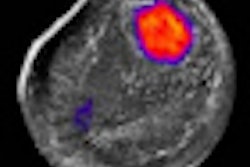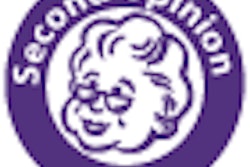The risk of getting breast cancer from mammography screening radiation is small compared to the benefits of the exam, and women should not be deterred from getting annual screening by fears of radiation exposure, according to a new study published online November 16 in Radiology.
Researchers at Sunnybrook Health Sciences Centre in Toronto estimated the risk of radiation-induced breast cancer following exposure of the breast to ionizing radiation from various screening mammography scenarios, and estimated the potential number of breast cancers, fatal breast cancers, and years of life lost attributable to mammography screening. They used a radiation dose estimate of 3.7 mGy, typical for digital mammography, and a cohort of 100,000 women (Radiology, November 16, 2010).
Lead author Martin Yaffe, PhD, and colleagues found that for the 100,000 women, receiving a dose of 3.7 mGy to both breasts from annual screening between the ages of 40 and 55 years (and biennial screening thereafter to age 74 years) would produce 86 radiation-induced cancers, including 11 fatal ones, and 136 life-years lost. But for the same cohort, 497 lives and 10,670 life-years would be saved by earlier detection.
"For women over 40, the expected benefits afforded by routine screening in terms of lives saved or years of lives saved greatly exceeds this risk," according to Yaffe. "For these women, radiation risk should not be a deterrent from screening."
Related Reading
Patient support boosts mammo screening rates, October 22, 2010
Closer follow-up reduces postmammography diagnosis delays, March 22, 2010
Study: Less breast screening leads to more palpable cancers, March 16, 2010
USPSTF guidelines influencing doctors, poll finds, February 16, 2010
Editorial: Research flaws make USPSTF guidelines obsolete, February 8, 2010
Copyright © 2010 AuntMinnie.com



















